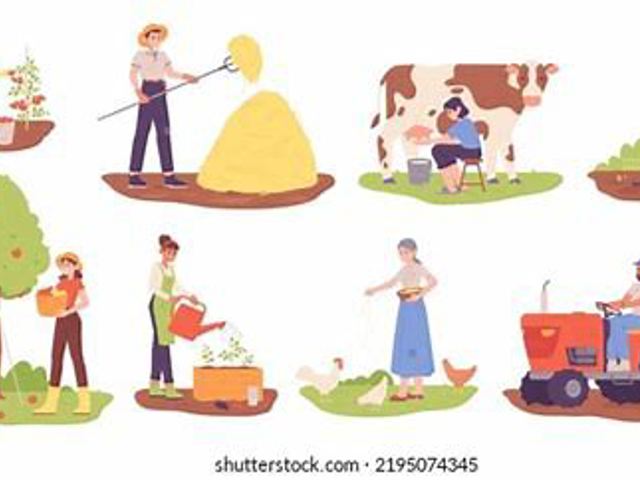Employment
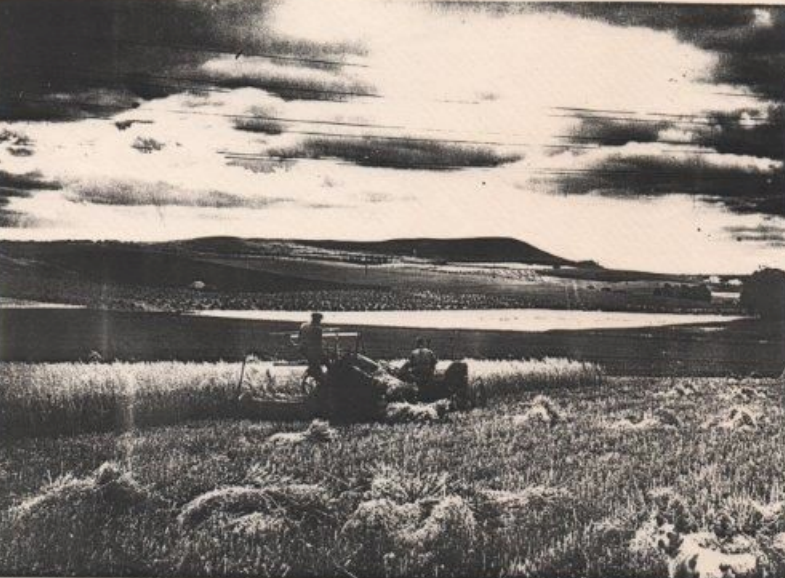
Harvest time before the arrival of the combine harvester.
Mr J. Lyon on the tractor and Mr S. Smith on the binder machine with the Ivinghoe Beacon in the background.
Source: CY Photo album
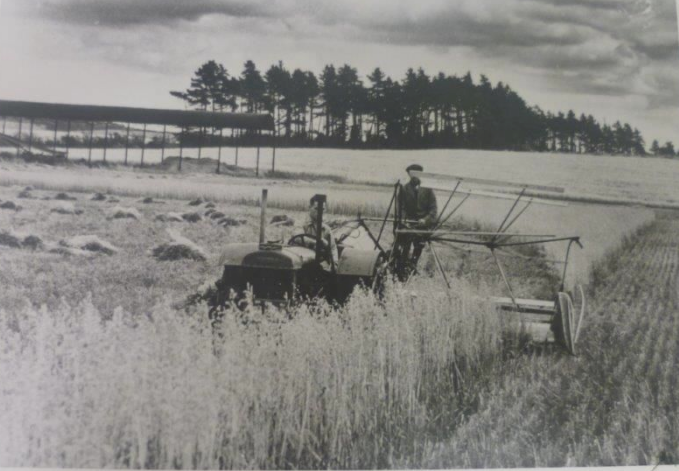
Nearing the end of cutting a field of oats in Mr J.M. Lyon J.P. Farm with the plantation in the background. Mr John Lyon on tractor, Mr Sid Smith on binder.
J.L.
Source: CY Photo album
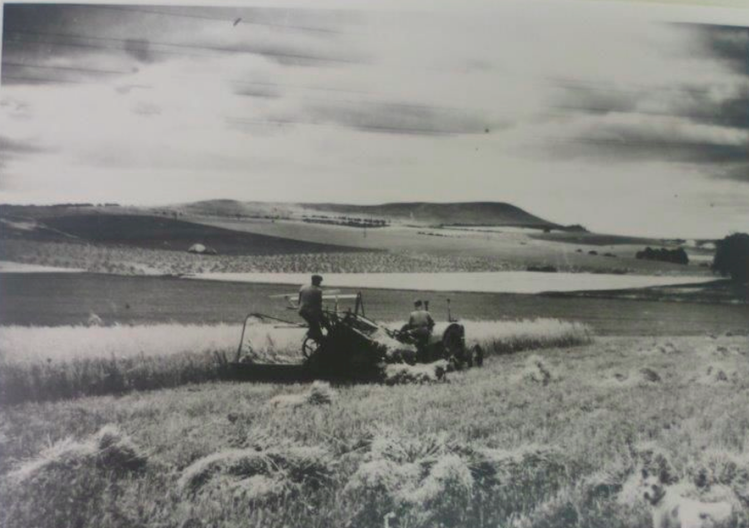
Harvesting on the Farm of Mr J.M. Lyon J.P. at Church Farm, Edlesborough.
Cutting a field of oats as can be seen in the English countryside. In the distance can the seen the Ivinghoe Beacon.
On the tractor Mr John Lyon, on the Binder Mr Sid Smith.
JL.
Source: CY Photo album

This photo shows Messrs Joe James, Fred Sear, Albert Rogers, Jay Rogers (on cart) and Albert ?, gathering in the harvest on Manor Farm. A stook can be seen at the bottom right corner. The Cow Barn of Church Farm can be seen on the left (about 1908)
E.R.
Source: CY Photo album
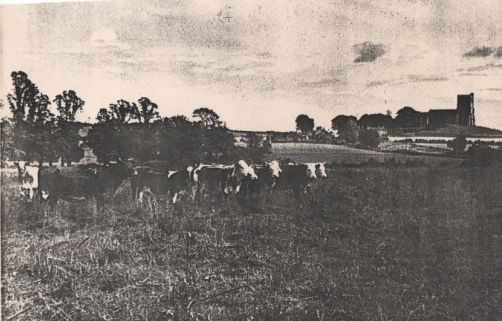
This photo was taken off the Northall Road East with the Church and Church End in the distance.
Source: CY Photo album
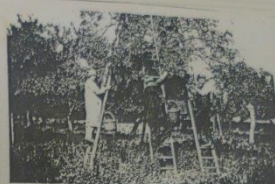
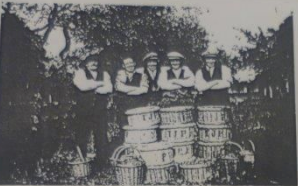
These 2 photos were taken in Mr George Bates orchard in Cow Lane. Those in the photo are Mr George Bates with his sons Frank, Alec, Stan and daughter Ida with her husband Bill Rollings.
It was taken about 1938 and it was plum picking season, late September to October. The plums they were gathering were prunes which only grew in the local area in the whole of England. The area included Totternhoe, Stanbridge Tilsworth, Edlesborough, Northall, Billington and as far south as Aston Clinton.
The growing of prunes was a very welcome industry and provided work for the ladies to gather them and men to move the ladders. When gathered they were put into wicker skips and weighed at 28lbs per skip, which was 80 skips per ton, or 24lb per skip, 93 skips per ton. Newspapers were put over them and kept in place by willow twigs about 2ft long. The railway van would collect them in the evening and take them to Stanbridgeford station to be dispatched to various markets. After a good season the station master stated he had dispatched 1,111 tons during the season. Most of the prunes were used to make dye to dye the cloth that was made into sailors’ uniforms. The industry started to decline after the 2nd World War and now only a few are gathered, the remainder are left to rot on the trees. The willow trees from which the twigs were cut are now left to grow wild. Nor are they required for rick pegs, used when ricks were thatched.
On Christmas morning 1984 Mr Cliff Tompkins gathered about 3lbs of prunes after a mild autumn. This had never been known before.
I.B. 1938
Source: CY Photo album
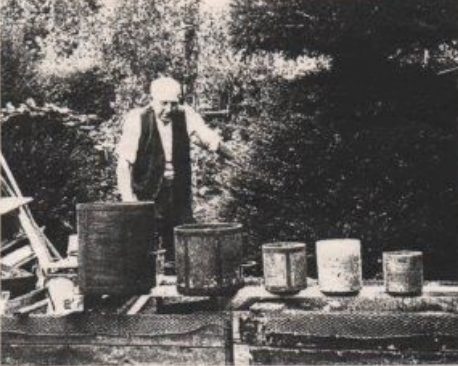
Imperial measure with official stamp and date 1874
Mr George Cook with his imperial measures : 1 bushel = 8 gallons or 32 quarts, 0.5
bushel= 4 gallons or 16 quarts , 1 (2) Peck = 2 gallons or 8 quarts, 1 Pottle= 0.5 gallons or 2 quarts.
Source: CY Photo album
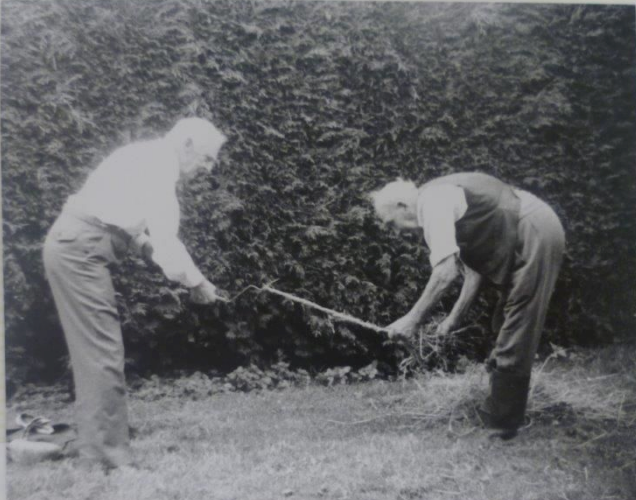
G Cook and G Broyde demonstrate how straw bands were made, which were used (instead of string) to tie up straw and hay into bales.
Source: CY Photo album

Mrs Geo. Tibbett was born in the hamlet of Northall and was named Clara Field. At the age of 5 she was sent to a plaiting school to learn to plait, this she did for most of her life. She married Mr George Tibbett and lived in two cottages near Sparrow Hall Farm. She had a family of 11: Florence, Daisy, George, Harry, John, Nellie, Mary, Clara, Kit, Hetty and Joan.
On one occasion she sent her daughter Nellie with a week’s plait to Mr Walter Gray’s and received 1/2d; Nellie lost the shilling on her way home and it was never found.
At the age of 79 years she was invited to take part in the Easter Bonnett Parade at Luton and this photo was taken on that day. Mrs Tibbett died in 1965 aged 91 years. This photo of Mrs Tibbett was donated by her daughter Mrs Nellie Clark.
Source: CY Photo album
